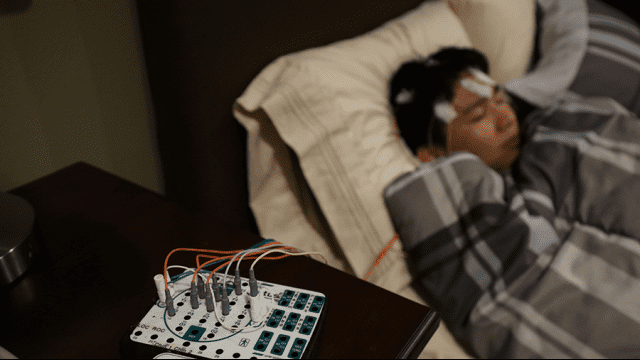
Michael Scullin kept waking in the middle of the night a song stuck in his head. This nuisance caused him to sleep terribly as no matter how much he tried, the earworm was still burrowing through his brain. But at least something good came out of this ordeal.
Inspired by this experience, Scullin, who is an associate professor of psychology and neuroscience at Baylor University, set out to investigate if there was any relationship between listening to music and sleep quality.
The brain can still process music even hours after the tune stopped playing
Previously, a survey by psychologists from the University of Sheffield found that many people use music as a sort of sleeping aid. The respondents claimed that listening to music close to or during bedtime helps them sleep better because it blocks external stimuli, induces a mental state conducive to sleep, offers unique properties that stimulate sleep, or simply because it’s become a habit. Overall, 62% of the 651 respondents confirmed that they play music to help themselves sleep.
However, Scullin’s research focuses on a rarely-explored phenomenon related to music known as involuntary musical imagery, or “earworms”. These mental patterns override our normal train of thought, which is replaced with a song or tune that is replayed in one’s mind over and over again. Apparently, Scullin isn’t alone. Many people who have earworms stuck in their heads report trouble sleeping.
“Our brains continue to process music even when none is playing, including apparently while we are asleep,” Scullin said. “Everyone knows that music listening feels good. Adolescents and young adults routinely listen to music near bedtime. But sometimes you can have too much of a good thing. The more you listen to music, the more likely you are to catch an earworm that won’t go away at bedtime. When that happens, chances are your sleep is going to suffer.”
The research consisted of two parts: a survey and a laboratory experiment. During the survey, 209 participants had to answer questions pertaining to sleep quality, music listening habits, and earworm frequency, as well as how often they reported experiencing an earworm while trying to fall asleep, during the middle of the night, or immediately upon waking in the morning.
People who experience one more earworm per week at night were six times more likely to report poor sleep quality compared to those who rarely experienced earworms.
During the experimental part, 50 participants listened to three catchy pop songs — Taylor Swift’s ‘Shake It Off,’ Carly Rae Jepsen’s ‘Call Me Maybe’ and Journey’s ‘Don’t Stop Believin’ — and then had to spend the night at the Sleep Neuroscience and Cognition Laboratory at Baylor. While they slept, the participants were wired to various instruments that measure brain waves, heart rate, and breathing.
Half of the participants were randomly selected to only listen to the de-lyricized instrumental versions of the pop songs, while the other half listened to the original versions.
This experiment confirmed that those who caught an earworm had greater difficulty sleeping, more nighttime awakenings, and spent more time in light stages of sleep.
“We thought that people would have earworms at bedtime when they were trying to fall asleep, but we certainly didn’t know that people would report regularly waking up from sleep with an earworm. But we saw that in both the survey and experimental study,” Scullin said.
Instrumental music actually triggers twice as many earworms than music with lyrics
Brain scans revealed that those who caught the dastardly earworm had slow oscillations during sleep, a marker of memory reactivation. These telltale oscillations were most active over a region of the primary auditory cortex which is known to be implicated in earworm processing. In other words, the brain scans showed how the earworms were triggering memories of song time and time again.
But the most surprising part was that instrumental music led to the worst sleep quality. You’d think that catchy lyrics are to blame for earworms, but apparently, music with no lyrics leads to twice as many earworms.
“Almost everyone thought music improves their sleep, but we found those who listened to more music slept worse,” Scullin said. “What was really surprising was that instrumental music led to worse sleep quality — instrumental music leads to about twice as many earworms.”
Those most at risk of catching an earworm that threatened to disturb their sleep were individuals with greater music listening habits.
These findings run counter to the notion of music as a sleeping aid, which is embraced by many health organizations that recommend listening to quiet music before bedtime.
Scullin’s research has objectively shown that the brain continues to process music for several hours even after the music itself stops.
Perhaps the truth is somewhere in the middle. For some, listening to relaxing music before bedtime may indeed work as a sleep aid. Others, however, may find the experience way too stimulating and stay awake well into the middle of the night because they can’t shed the earworm.
For those who have problems sleeping, Sculling advises moderate music listening — especially before bed.
“If you commonly pair listening to music while being in bed, then you’ll have that association where being in that context might trigger an earworm even when you’re not listening to music, such as when you’re trying to fall asleep,” he said.






